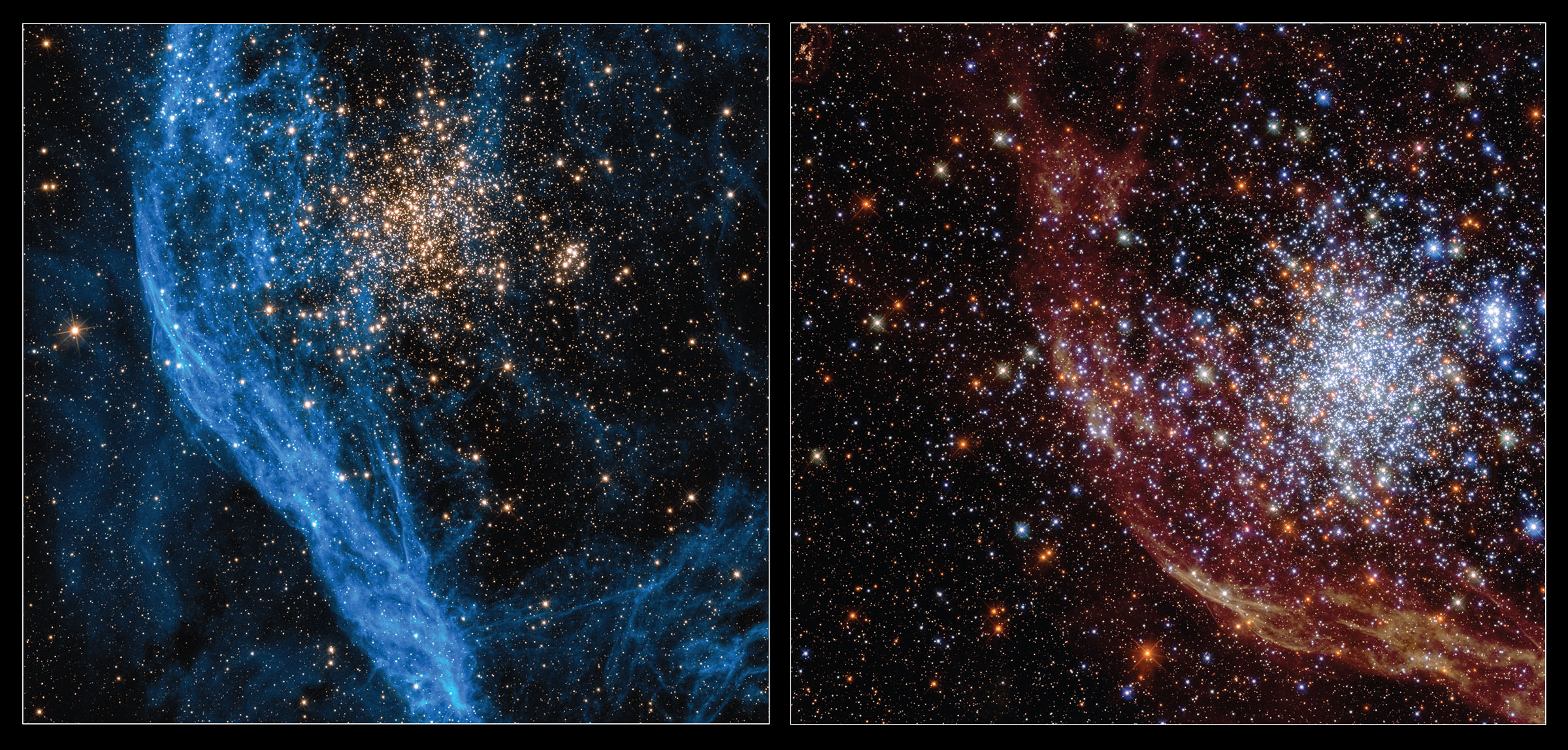Despite being a few decades old, the Hubble space telescope is still producing photographs that allow it to work alongside its more potent replacement, the James Webb space telescope. A dramatic difference can be seen between the two photographs of the NGC 1850 star cluster, which serve as the most recent demonstration of Hubble’s skills.
The images might look quite different, but NASA says they were taken in the same region of space. The difference in colors and what we see, though, is caused by utilizing two different filters to focus and study particular wavelengths. NASA says the blue image, which you can see below, showcases some near-infrared light along with visible light.

Image source: NASA, ESA and N. Bastian (Donostia International Physics Center); Processing: Gladys Kober (NASA/Catholic University of America)
Visible light is the wavelength of light that human eyes can detect – think of the light from the Sun. Infrared light, on the other hand, requires instruments to see it properly. The image in red not only offers a different pointing of the NGC 1850 star cluster, but it also focuses on near-ultraviolet light, to show us the beginnings of the infrared spectrum.
This difference in how we look at different light wavelengths has allowed us to detect light from the hottest and youngest stars, whereas the blue image capturing near-infrared and visible light shows us light from older stars. The NGC 1850 star cluster is a 100 million-year-old globular cluster near the Large Magellanic Cloud.

The Large Magellanic Cloud is a satellite galaxy that many believe will collide with the Milky Way sometime in the future. Located just over 63,000 light years, the LMC has been the target of many observations, including some by Hubble earlier this year. For this observation, though, Hubble focused solely on the NGC 1850 star cluster and how it differentiates across wavelengths.
It’s an intriguing way to look at the star cluster, and one that continues to show just how different the universe can be when you change your perspective.
Source: bgr.com








